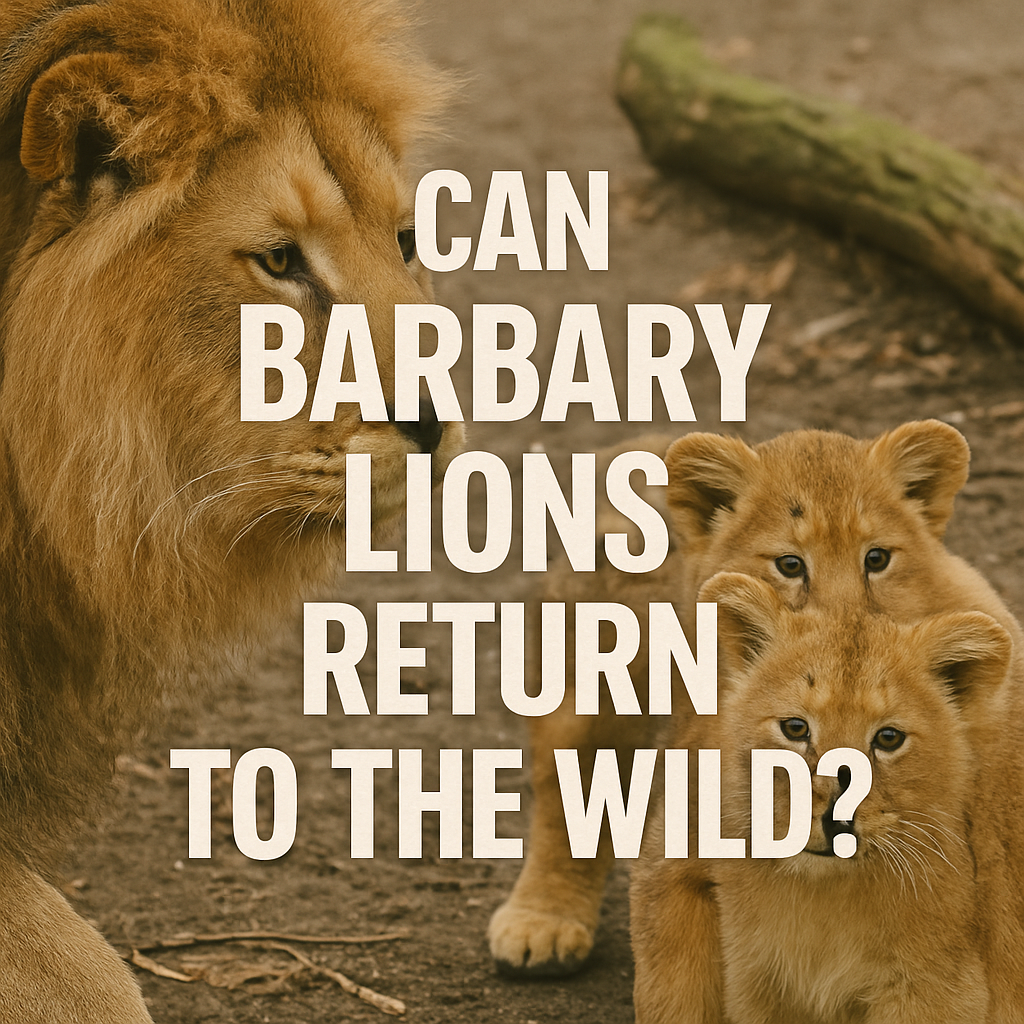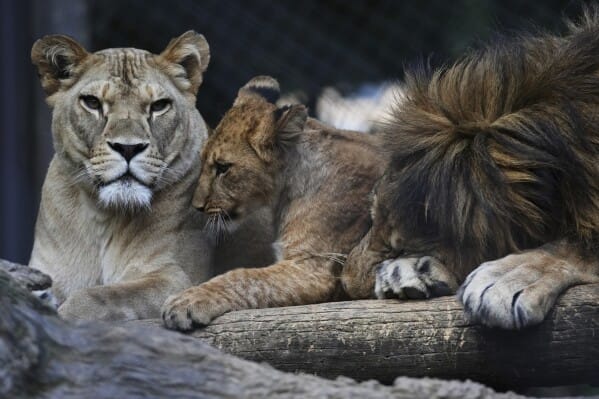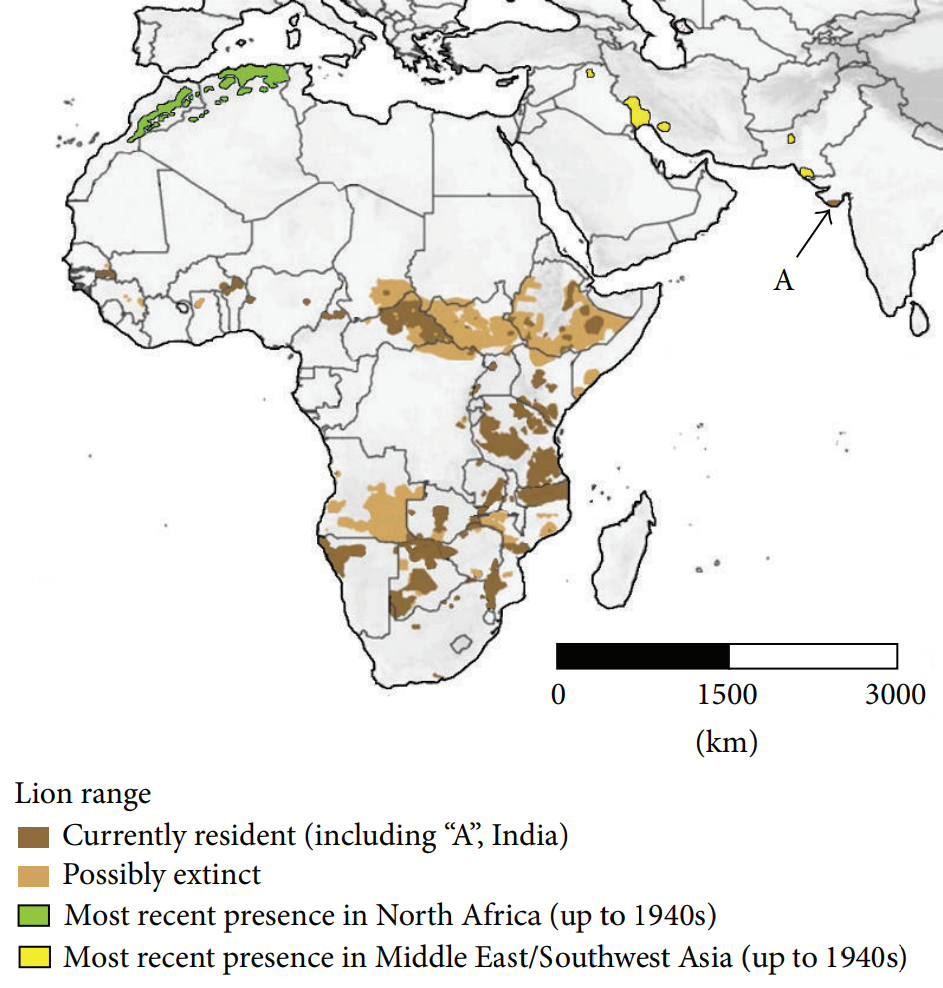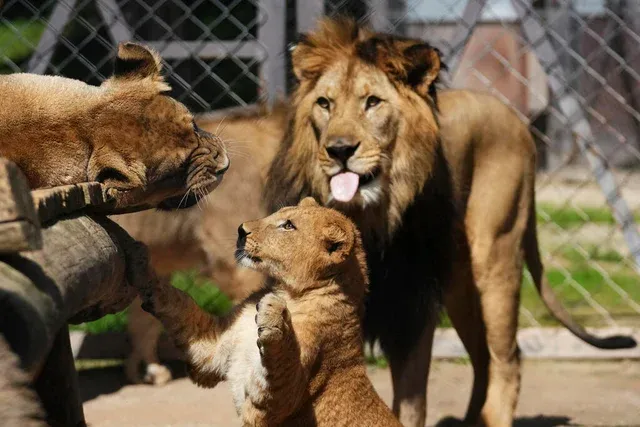From Extinction to Hope: Czech Zoo Welcomes Barbary Lion Cubs
Four Barbary lion cubs born at a Czech zoo offer a new lifeline to a species extinct in the wild since the 1960s. A detailed look into conservation, genetic tracking, and the future of a lost icon.

Written by Lavanya, Intern, Allegedly The News
DVŮR KRÁLOVÉ NAD LABEM, CZECH REPUBLIC, August 8, 2025
A New Generation for a Lost Species
The announcement of four healthy Barbary lion cubs at the Dvůr Králové Safari Park is a victory that resonates far beyond the Czech Republic. These three females and one male are a critical genetic boost for a population that, with fewer than 200 individuals remaining in captivity globally, exists in a precarious state. The Barbary lion (Panthera leo leo) is a subspecies that once reigned supreme across North Africa. Its modern-day survival, however, is a direct result of human intervention, an uncomfortable truth that simultaneously highlights our destructive past and our potential for redemption. The cubs, born to parents Bart and Khalila, are part of a meticulously coordinated European Endangered Species Programme, which is the last hope for this iconic predator. Their birth is a crucial milestone, but it also prompts us to ask profound questions about the nature of conservation and the true meaning of a species being "extinct in the wild."
The Barbary Lion’s Last Stand: A Timeline of Extinction
The history of the Barbary lion's decline is a tragic tale intertwined with the history of human civilization. To truly appreciate the significance of these cubs, we must first understand what was lost.
- Ancient History (Roman Era - 18th Century): The Barbary lion was a living legend, a symbol of power used by ancient empires. The Romans captured and transported thousands of these lions for gladiatorial contests, a practice that severely depleted their numbers even centuries ago. After the fall of the Roman Empire, the lions persisted, but their range began to contract due to human settlement. By the early 18th century, they had vanished from the northeast of their range and were primarily confined to the Atlas Mountains.
- 19th Century: The Age of Trophy Hunting: The arrival of European colonial powers in North Africa accelerated the lion's demise. Trophy hunting became a widespread sport among military officers and wealthy elites, who saw the killing of these magnificent animals as a symbol of colonial dominance. Bounties were also paid for shooting lions, turning their eradication into a lucrative enterprise. This era, coupled with widespread deforestation for agriculture, shattered the lion's habitat and fragmented its population.
- 1920s - 1960s: The Final Disappearance: The last known photograph of a wild Barbary lion was taken from an aerial view in 1925 in the Moroccan Atlas Mountains. The final confirmed wild shooting of a lion took place in 1942 near Tizi n'Tichka. However, recent historical reviews suggest that small, isolated populations may have persisted in remote mountain areas of Algeria and Morocco until the mid-1960s. Their final demise is thought to have been accelerated by military conflicts and the systematic destruction of their last remaining forest hideaways. In the span of just over a century, a species that had roamed a continent for millennia was reduced to a few scattered individuals.

The Conservation Strategy: From Royal Menageries to Modern Science
The Barbary lion's survival today is a story of serendipity and modern science. After being declared extinct in the wild, the hope for the species rested on a small, uncatalogued population of lions kept in the private menagerie of the King of Morocco. These lions, believed to be the last purebred descendants, became the foundation for a global conservation effort.
The Science of Genetic Rescue: This is where the term "extinct in the wild" becomes a living paradox. The goal of captive breeding is to preserve genetic diversity, preventing the devastating effects of inbreeding. Scientists use genetic tracking and studbooks to meticulously manage the global Barbary lion population, ensuring that new pairings introduce fresh genetic material. The Dvůr Králové Safari Park plays a critical role in this network, and its latest cubs will soon be relocated to other partner zoos to broaden the gene pool. This coordinated effort is the species’ only safeguard against complete extinction.
The Role of Zoos: Zoos like Dvůr Králové have transformed from simple entertainment venues into critical centers for conservation. They serve as "arks" for species that have no hope of survival in a world where their habitats are gone. For the Barbary lion, the zoo is not just a home; it is a research lab, a breeding center, and a public-facing advocate for its future. Jaroslav Hyjánek, Deputy Director of Dvůr Králové Safari Park, powerfully articulated this vision: "It's important to have such a vision for any animal... Without it, the existence of zoos wouldn't make sense."
The Ethical Crucible: Are Zoo Births True Victories?
The debate over the ethical role of zoos has never been more intense. While the birth of these cubs is a cause for celebration among conservationists, it raises difficult questions. Are we simply creating living museum pieces, beautiful but ultimately unwild animals that will never know the freedom of their ancestors?
Animal welfare advocates argue that no enclosure, no matter how large, can replicate the natural environment of a lion. They point to the potential for psychological stress and the fact that these animals are raised without the hunting and survival skills of their wild counterparts. The trade of these animals between zoos, while necessary for genetic diversity, can also disrupt social bonds and cause stress.
Conversely, conservationists argue that the alternative—total extinction—is far worse. They contend that zoos are not only preserving the species but are also educating the public about the importance of biodiversity and the threats facing wildlife. The births in the Czech Republic serve as a powerful teaching moment, connecting people to a species they would otherwise only read about in history books. This engagement is crucial for garnering public support and funding for broader conservation efforts. This debate highlights the core conflict between animal rights (the individual's right to freedom) and conservation ethics (the species' right to exist).

The Long Road to Rewilding
The ultimate goal for the Barbary lion is a triumphant return to its native lands. This concept, known as rewilding, is the holy grail of conservation. Preliminary discussions are underway between Dvůr Králové and Moroccan authorities about a potential reintroduction program in the Atlas Mountains. However, the path forward is fraught with immense ecological and political hurdles.
Ecological Barriers: The Atlas Mountains are a different ecosystem today than they were a century ago. The prey base, which once included Barbary deer and Bubal hartebeest, is largely gone or critically endangered itself. Releasing a top predator without a stable food source would be irresponsible and doomed to fail. A successful rewilding effort would first require a massive, decades-long project to restore the entire ecosystem, including the reintroduction of prey species. This is a monumental task that would require vast resources.
Political & Social Barriers: The political will and community support for such a project are paramount. Local communities, particularly those who rely on farming and livestock, may be resistant to the reintroduction of a predator that could threaten their livelihoods. Compensation schemes, community engagement, and long-term security plans would be essential. Furthermore, the logistical challenges of monitoring and managing a newly introduced population of large carnivores in a modern, human-dominated landscape are immense. Initial talks with Moroccan authorities, who have not rejected the idea, are a promising first step, but a conference of experts is planned for late this year or early 2026 to truly assess the viability of such a plan.
From Colosseum to Activism: A Legacy Renewed
The Barbary lion has completed a full circle, from a symbol of human power and spectacle in the Roman Colosseum to a tragic victim of human expansion and, now, an icon of endangered species activism. Its story is a microcosm of humanity’s relationship with the natural world - a relationship defined by both exploitation and, hopefully, ultimate responsibility. The four cubs in the Czech Republic are not just cute animals; they are living proof that hope for a lost species is not a fantasy, but a challenging, complex, and deeply ethical journey that we must choose to undertake.
A Roar of Hope, a Call to Action
The birth of these four Barbary lion cubs is far more than a heartwarming news story from a distant Czech zoo. It is a powerful roar of defiance against the silence of extinction. In their tiny paws and soft fur lies the last, fragile hope of a species once thought lost forever. Their arrival is a testament to the fact that extinction is not always a final verdict; sometimes, it is merely a chapter break.
But this new chapter is not one of passive observation. It is a clarion call to action. The cubs represent a profound responsibility - a debt owed by humanity for a history of reckless conquest and environmental neglect. They challenge us to look beyond the bars of their enclosure and confront the difficult questions of our age: Can we truly reverse the damage we have done? Are we willing to invest the time, resources, and political will to heal entire ecosystems, not just save a single species?
The journey of the Barbary lion from the sun-scorched arenas of ancient Rome to a safe haven in a modern zoo is a microcosm of our own evolving relationship with the natural world. It proves that we have the capacity to move from exploitation to conservation, from destruction to redemption. The fate of these cubs, and the future of their species, rests not in the hands of zookeepers alone, but in our collective commitment to a wilder, more compassionate world. Their very existence is an urgent and beautiful reminder that the fight for biodiversity is never truly over, and that even from the brink of oblivion, a new life and a new hope can emerge.

What do you think?
The "Extinct in the Wild" Paradox: What are the broader implications of the "extinct in the wild" classification for conservation policy? Should this status encourage more aggressive rewilding efforts, or should it lead to a re-evaluation of what constitutes a conservation "victory"? How can modern zoos evolve to become more than just "arks" for species? What role can they play in bridging the gap between captive breeding and true rewilding, and how can they better address the ethical concerns of animal welfare in the process?
Sources
The information is based on a synthesis of recent reports from the Associated Press and The Guardian, as well as scientific papers and institutional data. These sources detail the specific events at the Dvůr Králové Safari Park, the history of the Barbary lion's extinction, the scientific methodology behind captive breeding programs, and the current status of rewilding discussions. The images are taken from the Czech Zoo / Photo via AP, 2024. News coverage of Barbary lion cub births from conservation programs, Photo by Petr David Josek / Associated Press (AP Images), 2024. Captured at the Czech Zoo breeding Barbary lions, Bauer et al., 2015; Black et al., 2013; Schnitzler, 2011. [Visual from: Current and Most Recent Historical Distribution of Lions, 2018.] The details on genetics, historical timelines, and the perspectives of zoo officials are drawn from these reliable publications and academic research.




